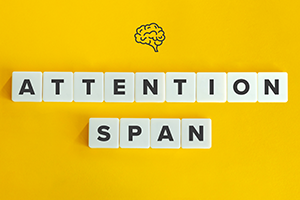
The Latest Hospital Digital Marketing Articles
GreyMatters is your hospital digital marketing guide, with articles on hospital digital marketing best practices, trends, updates and more.
Adapting Marketing Strategies to Decreasing Consumer Attention Spans
It is commonly said that attention spans are getting shorter. But is that really true? And if it is true, how do shorter attention spans affect marketing strategies?

In 20217, the Pew Research Center found that the constant bombardment of information from various sources of distraction contributes to decreasing attention spans. Most of us would struggle to have a tech-free few hours, let alone an entire day without relentless interruptions from technology and information. This leads us to a decreased ability to focus on any one thing for any length of time.
Add to the onslaught of digital distractions the effects of social media and short form content, and attention spans go further south.
The effects of digital distractions include:
- A preference for short-form content. Think TikTok and Instagram reels and X (Twitter) length social media posts.
- More selectivity about content consumption. Those social media algorithms that we all love to hate bring us the type of content it determines we prefer. This creates an “echo chamber” effect, where there is more exposure to the same types of ideas and points of view.
- Adapting marketing strategies to account for changes in attention spans. Tactics like attention-grabbing images, engaging headlines and interactive content capture the attention over a short time.
- A decrease in the quality of content. This may happen as marketers rush to quickly create more content.
The response to shorter attention spans includes:
- Development of shorter content formats, such as short videos, infographics or brief blogs.
- Offering a variety of content types helps to engage different audiences by connecting with their varying preferences.
- Customizing for different channels. What works better for social media isn’t necessarily a fit for a blog. Consider the characteristics and expectations for each channel to develop content that fits it best.
- Images and visuals that quickly grab attention. Visual content conveys information quickly and consumers find it more engaging.
- Emphasize value and relevance. It’s important for content to meet the needs of the audience, which requires an understanding of their pain points and interests.
- Mobile optimization. Mobile devices are ubiquitous, so content must be mobile friendly.
- Using strong hooks to draw the audience in. A compelling headline or opening line can quickly draw a consumer in and maintain their attention.
- Making use of storytelling. Everyone loves a good story, especially if it’s short and powerful.
- Analysis and adaptation. Finding what works and improving it is key.